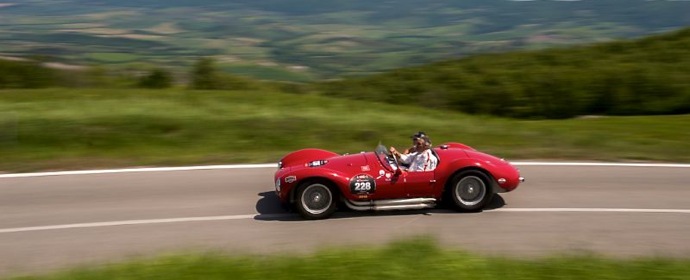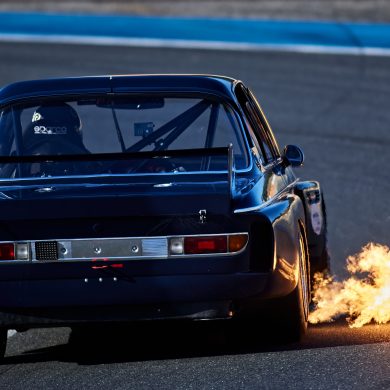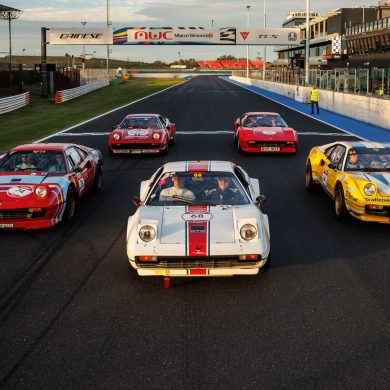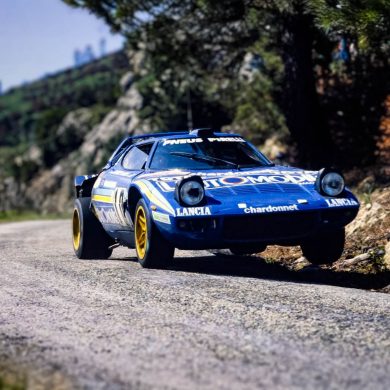Report and photos by Dirk de Jager
La Mille Miglia, or the 1000 Miles, has become an Italian institution on the classic car calendar. Originally a full-on, flat-out race starting in Brescia and heading down to Rome and back in one go, the Mille Miglia was started in 1927 and ended after 24 editions in 1957 when the race was outlawed from being too dangerous after several fatalities. Even though the entire route was closed off, the roads aren’t what they are today and Sir Stirling Moss set the fastest lap in 1955 reaching the finish after 10 hours 7 minutes and 48 seconds with a staggering average speed of 98.53mph.
For its 50th anniversary the Automobile Club de Brescia re-enacted for the first time the retrospective event and since then this has grown to the biggest classic car event in Italy. With an estimated 4 million people lining the roads and the cities where the caravan passes through, this surely shows that the trace of the Red Arrow is firmly alive.
With 385 cars taking the starting ramp in Brescia for the 2012 Mille Miglia, this is just a small part of the car madness you stumble across those three days in Italy. The official caravan averages out with a 1000 cars that run the entire route, not counting the several thousands of classic and sports cars that follow partially or fully along coming from all over Europe. Yet for the actual cars, these are selected as to the cars that ran in period, with preference being given to cars that actually participated back in the day. Over 50 cars this year drove the race when they where new, the rest are the same model that raced. This year’s retrospective saw the big blue-chip collector cars such as the Alfa Romeo 6Cs and 8Cs, Mercedes-Benz SSKs and naturally Ferraris, in addition to a huge assortment of Etceterini cars from Ermini, Bandini, Stanguellini and so on. The origianl Mille Miglia started several hundreds of cars and most part where normal Italian cars, albeit tuned or stock. This shows in the entry list when you see classics as a VW Bug or a Fiat 500.
Traditionally starting on Thursday evening during sunset this first drive takes them for 260km from Brescia to Ferrara while visiting cities such as Verona, Vicenza and Padova along the way. At this very first night the true spirit of the Mille Miglia already comes out since it doesn’t matter at what time you pass somewhere, even at 1:00 am there will still be people lined up at every corner, roundabout and town square, cheering everybody on until the last car has passed. Driving through the historical centres of these great cities is one the most enjoyable parts of the rally, often it takes you around the most beautiful spots of the town where sometimes cars aren’t even allowed. Usually you will be welcomed by the mayor and a big crowd that adds to the excitement.
For the second day, the 2012 Mille Miglia route went from Ferrara to Rome, at least a 14-hour drive, and this is where the fun starts with more interesting roads. Starting a bit from before the republic of San Marino this will take you more in the hillsides and off the main roads. This privacy from general traffic allowed drivers to have some more fun with the car and also enjoy the many great scenic views. The Terminillo pass was left out of the route this year, meaning that a big part of the afternoon was spent on express roads with the sole advantage of an earlier arrival in Rome.
The last day of the 2012 rally was an early rise out of bed since the first starters leave from Castello di Sant’Angelo at 6:30am for a minimum 16 hours drive going to Viterbo, Radicofani Siena Firenze, Futa and Raticossa passes, Bologna, Modena and all the way back to Brescia. This day shows some of the most gorgeous cities you can visit in Italy and one of my personal favorites is Radicofani, a small town on top of a hill with a spectacular drive back down. Unfortunately this year there seemed to have been a problem in the city and, at the last minute–in other words that same morning–the route was changed bypassing the historical centre.
Siena always gives one of the most impressive views when you reach Piazza de Campo in Siena. As soon as you clear the houses you have an amazing view over the entire square while you drive down in between the line of people where the contestants receive their stamp before going back up through the small streets to continue their journey.
After the lunch stop participants went through Firenze before arriving at some of the best roads the Mille Miglia has to offer – the Futa and Raticosa passes. Always crowded with spectators, this road is known for some spirited driving. Unfortunately the 2012 Mille Miglia kept up its annual tradition of having rain at some point. This time that came for about three hours in the afternoon, just when a big part of the rally drove over the passes.
For me personally I always feel that the Mille Miglia is ‘over’ as soon as I enter Bologna right after the Raticosa. After that is is mostly flat and straight roads with roundabouts. You do luckily still pass a few gorgeous cities, including Maranello where they drive through the Ferrari factory and have a timed stage on Fiorano. Yet here it is mostly driving on busy main roads that makes progress often difficult.
Overall victory at the 2012 Mille Miglia went to the Scuderia Sports-entered Alfa Romeo 6C 1500 Testa Fissa Zagato from 1933 driven by Argentinians Claudio Scalise and Daniel Claramunt. It will be interesting to follow what will happen with this historical event for next year since the five-year contract for current organiser MAC Events has expired. Who will take up the challenge to organise next year’s Mille Miglia in the quest to keep the Red Arrow alive?
Mille Miglia 2012 – Photo Gallery (click image for larger picture and description)
[nggallery id=407 images=15]
[Source: Dirk de Jager]











Well so much for all the expensive big bangers- what about that Austin Seven Ulster !!!
Celebrating Charles Goodacres 1931 entry in the race.
http://www.austin7racing.com/
Congratulations to the great team (and the grand car)
Lovely images Dirk.
If the M.M. regs and instructions are the same as in the 1980s and 1990s, the entrants (drivers) was told exactly the time to arrive at a check point. Thus the trick was to wait until the driver, having practiced their time to accelerate the space before the “finish” line, could accelerate and hit the line at their prescribed time. The only time and distance rallye element in the M.M. was in last (10m.?) space. Also, if the public road rallye/event average speed limit is still 50km (31 mph), it was not unknown for the crew to stop for a coffee-wine-whatever break and then make up the time at a more exciting speed. Thus the M.M. is not a contest but a great theater production with 375 actors.
The photo of the Ferrari 212 Export coupe caught my eye. In an ancient Road & Track article they reported on the mechanical rebuild of a 212. When the owner was asked how much it cost to rebuild the engine he replied: Quite a bit. The engine gasket set was pretty expensive, the gaskets must be made from parchment from the DEAD SEA SCROLLS!
Went to Italy this year because it was somewhere we wanted to go as part of our Ruby Wedding Celebrations & what a joy! a bonus afternoon of the Mille Miglia going past our hotel in Florence (sorry Firenze). The hotel Balestri just by the river what a glorious sight
Thank you.
John Hartley
PS Got some photo’s as well!!
Hello, I am looking for an original roadbook from the mille miglia, can somebody help me with that?